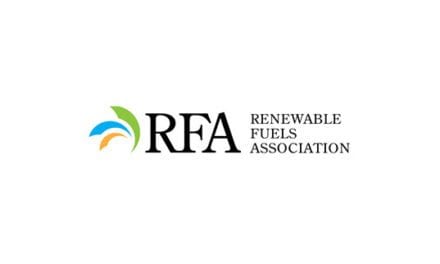Proven reserves of crude oil grew 15.4 per cent in 2012 to 33 billion barrels.
Natural gas proved reserves decreased 7.5 per cent in 2012, responding to lower prices for natural gas.
The most recent data from EIA cover the week ending April 4th. Commercial stocks of all oils rose 5.5 million barrels. Of this, crude oil supplies added 4 million barrels.
PADD III crude oil stocks rose 3 million barrels. There are 202 million barrels of crude oil in Gulf Coast storage.
Some technicians are viewing the natural gas price charts bullishly. The low price pf $4.221 on April 2nd formed a candlestick “hammer.” The Hammer candlestick formation is a significant bullish reversal candlestick pattern that mainly occurs at the bottom of downtrends.
Sincerely,Alan Levine
Chairman, Powerhouse
Table covers crude oil and principal products. Other products, including residual fuel oil and “other oils” are not shown, and changes in the stocks of these products are reflected in “Total Petroleum Products”.
Statistics Source: Energy Information Administration “Weekly Petroleum Status Report” available at www.eia.doe.gov
The Matrix
Data were released last week that showed OPEC production declining while U.S. proven reserves were growing.
The Energy Information Administration’s Annual Energy Outlook 2014 reported that U.S. crude oil proved reserves increased in 2012. These stand at 33 billion barrels. This is a 15.4 per cent increase. The gain in proven reserves was the largest volumetric and relative increase since 1970. At that time, ten billion barrels of Alaskan reserves were added to national totals. Proved reserves of crude oil in 2012 were the fourth consecutive annual gain and were the highest since 1976.
OPEC oil production fell during March. The cartel, which produces about a third of the world’s oil, produced 29.6 million barrels daily in March. This was a decline of more than one half million barrels daily during the month. Much of the decline was in Iraq, where infrastructure challenges are slowing development.
Supply/Demand Balances
Supply/demand data for the week ending April 4, 2014 were released by the Energy Information Administration.
Total commercial stocks of oil rose 5.5 million barrels. Crude oil supplies rose 4.0 million barrels during the report week. Nationally, crude oil imports rose 481,000 barrels daily to 7.3 million barrels daily. And on the Gulf Coast, the increase reflected recovery of shipping in the Houston Ship Channel. PADD III crude oil imports reached 673,000 barrels per day. Imports to the Midwest fell 75,000 barrels daily. Imports fell 132,000 barrels per day on the West Coast.
PADD III crude oil stocks rose 3 million barrels. There are 202 million barrels of crude oil in Gulf Coast storage. This is a record high level of crude oil in storage, but as noted last week, there remains considerable additional capacity available.
Cushing OK added 300,000 barrels of crude oil to inventory, now at 27.6 million barrels. This was the first increase in Cushing storage in ten weeks. Stocks at Cushing were 41.8 million barrels on January 24th when supplies started their rapid decline.
The drop in Cushing supplies came about as new pipelining came available to carry oil to Gulf Coast refineries. This week’s recovery raises the question of the degree to which crude oil storage may now be balanced on the Gulf Coast and the Midwest. It should be bearish for WTI If this is the case.
Gasoline stocks fell to 210.4 million barrels, a weekly drop of 5.2 million barrels. Substantial declines were seen on the East, West and Gulf Coasts. Weekly demand reached nine million barrels daily for the week. The average of the past four weeks is 8.8 million barrels per day, 4.4 per cent higher than last year at this time. Last year, nine million barrels per day consumption were not seen until summer.
Distillate fuel oil added 200,000 barrels to storage during the report week. The East Coast added 1.6 million barrels to supply. According to last week’s report, 2.1 million barrels found their way into East Coast storage. Supplies are now higher than last year, but lag the 2012 level of 45.1 million barrels. Distillate fuel oil demand rose to 3.9 million barrels daily.
Propane inventories added one million barrels in the U.S. PADD III stocks accounted for half of the gain.
Natural Gas
According to the EIA: Working gas in storage was 826 Bcf as of Friday, April 4, 2014, according to EIA estimates. This represents a net increase of 4 Bcf from the previous week. Stocks were 849 Bcf less than last year at this time and 997 Bcf below the 5-year average of 1,823 Bcf
Some technicians are viewing the natural gas price charts bullishly. Price fell from the $6.495 high of February 24th reaching $4.221 on April 2nd. The low formed a “hammer” candlestick on a weekly chart. The Hammer candlestick formation is a significant bullish reversal candlestick pattern that mainly occurs at the bottom of downtrends.
An El Nino is Forming
The U.S. government has issued an El Nino watch. Forecasters anticipate an unusually large El Nino because of very warm waters now developing in the Pacific Ocean. As this water surfaces and approaches North America, forecasters think 2014 could be the hottest year on record. This has serious implications for natural gas pricing this summer and even into 2015.
Natural gas proved reserves decreased 7.5 per cent in 2012, responding to lower prices for natural gas. Data for 2013 are expected to show increasing reserves because of price recovery.
Futures trading involves significant risk and is not suitable for everyone. Transactions in securities futures, commodity and index futures and options on future markets carry a high degree of risk. The amount of initial margin is small relative to the value of the futures contract, meaning that transactions are heavily “leveraged”. A relatively small market movement will have a proportionately larger impact on the funds you have deposited or will have to deposit: this may work against you as well as for you. You may sustain a total loss of initial margin funds and any additional funds deposited with the clearing firm to maintain your position. If the market moves against your position or margin levels are increased, you may be called upon to pay substantial additional funds on short notice to maintain your position. If you fail to comply with a request for additional funds within the time prescribed, your position may be liquidated at a loss and you will be liable for any resulting deficit. Past performance may not be indicative of future results. This is not an offer to invest in any investment program.Vol. PH 03 NO. 15
Was this memo helpful? We’d like your feedback.
Please respond to [email protected]
Copyright © 2014 Powerhouse, All rights reserved.












